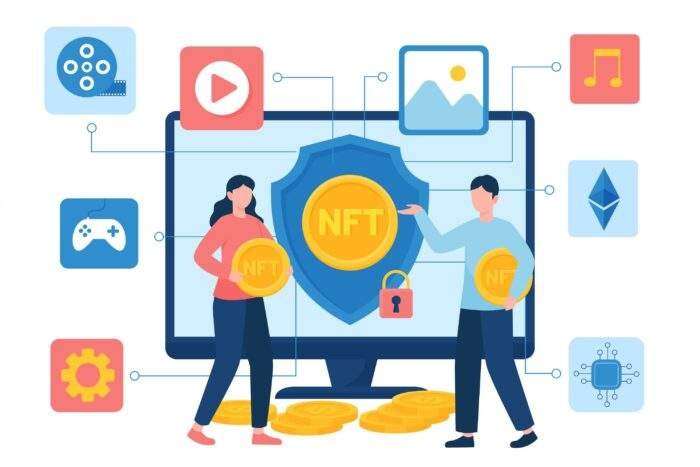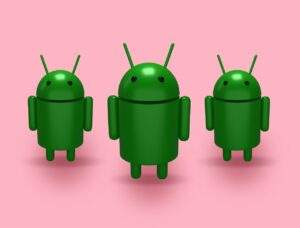Making An NFT Market Using Polygons

Markets for non-fungible tokens (NFTs) facilitate the creation, trading, and acquisition of NFTs on a unified platform. In particular, it is analogous to purchasing or selling an item on a virtual marketplace such as Amazon, eBay, or Alibaba. All transactions are handled by smart contracts and recorded in the blockchain; in our case, the Polygon blockchain is the only significant difference between NFT marketplaces.
1. Determine your niche
Standardized NFT Market
General trading terminals and customized trading terminals are the two main types. Web-based marketplaces that feature a wide variety of vendors and products are called “general platforms.” NFTs include all forms of digital media, including works of art, collectibles, sports, music, comics, movies, TV shows, and video games. These NFT marketplaces may have a large consumer base but sacrifice market segmentation in exchange for volume.
Superior NFT framework
Another option is to focus on a niche market by providing a service that meets their specific requirements, such as a store that exclusively deals in digital artwork and games. Numerous methods exist for specializing in a subset of a larger market. For illustration’s sake, this site enables the trading of NFTs generated by influencers, much like how Valuables swaps the tweets of renowned individuals. There is little difference between the technological difficulties of making a specialized platform and making a popular one, but niche platforms let you do more with layout and advertising customization.
2. Find a blockchain expert to work with
When you know what you want to sell, you may start looking for a technical partner like Morehead, who has extensive knowledge in blockchain development and introducing NFT solutions. Since 2015, our team has released a variety of blockchain solutions, ranging from simple, smart contracts to highly encrypted cryptocurrency exchanges and NFT marketplaces. Please let us know if we can help implement your blockchain plan.
3. Establish a means by which the project will be funded
The next thing to do is sketch a business plan for your NFT platform, detailing how you intend to make money. There are many ways to bring cash, and each has its own pros and cons. Below, we’ve described the most frequent strategies for profiting on the NFT trading platform.
Fees
A marketplace’s primary revenue model is to take a percentage of all transactions. In most cases, the NFT vendor forks over cash because he stands to gain from the transaction; hence he experiences little to no psychological distress from making the financial commitment. However, if the buyer must pay 15%, as they do in the Foundation and SuperRare markets, making a decision will be more difficult.
Subscription
Users pay a monthly subscription to access the network and exchange tokens, a novel and intricate monetization method. The platform’s implementation is challenging because it requires offering something unique to consumers. These are advantages over the competition that no one else provides.
Freemium
This tactic assumes that your NFT platform will provide some basic features at no cost to consumers, with more advanced features available for a premium. You can limit new token creations each month to five for free, then start charging a price afterward.
Advertising space in a directory
If you adopt this policy, every nugget of knowledge shared on your website will be sold to paying customers. Furthermore, the user is still accountable for payment regardless of whether or not the NFT was sold.
4. Identify the roles played by the market
Consider who you’re building the platform for and how you’ll make money before deciding on new features. All systems must have the components listed in the table below.
Showcase
The screen is where most of your customer’s attention will be focused. Therefore, it should be aesthetically pleasing and informative. The exhibit should also be intuitive to use so users can quickly see the fruits of their labor. The presentation of your NFT market, including its design and navigation, should feel natural to the end user. In other words, the showcase will serve a similar purpose to popular auction and shopping websites.
Integrations with Wallets
Token issuance, sale, and purchase necessitate cryptocurrency wallets since the blockchain stores all NFT transactions. It would be best if you supported multiple cryptocurrency wallets to attract more customers to your NFT marketplace on Polygon. Additionally, you can use Enjin, AlphaWallet, Coinbase, and the Pillar Wallet by Binance. Despite their lower adoption rates, there is still a substantial audience for these apps.
Producing an NFT
Any NFT marketplace must also be able to create new tokens on the network. As we expand our platform, the fact that non-fungible tokens may be issued on the Polygon blockchain at no extra cost is a great help. The remaining capabilities are universal to all systems.
Communication Promotion
It could be before a newly minted NFT is traded after its creation. The seller must undertake the bare minimum, which includes writing up a description of the item, deciding how it will be sold (at a set price or auction), settling on a price, listing the acceptable payment methods, and establishing a bidding time. The next step is to check the site’s regulations to make sure the lot is in order before putting it up for sale.
Powerful, in-the-know search engine
On the NFT platform, lots might have hundreds of thousands of labels and categories. The user can either look through all the available lots to find the one they want or use a search engine with advanced filters, categories, tags, name/author/keyword searches, etc.
Comments and advice are welcome.
The fact that users are accustomed to seeing the responses of others makes this feature, albeit optional, vital. Your comments will help curb dishonest or unethical behavior on the site. In addition, it’s a huge bonus for your platform that you can tag famous writers on Facebook, YouTube, and other social media sites.
Competitive bidding
People are accustomed to selling novel things through online auctions, such as knitted headgear, Warcraft-inspired axes, and NFTs. Create an NFT marketplace on Polygon (MATIC) that has such functionalities. This will help authors get the most money for their NFTs and make the bidding process more exciting for buyers.
Notifications
Typical examples include receipts for paid items, account credits, app updates, and correspondence from the support staff. However, it would be to your advantage to continue. In addition, your site can update customers on recent events, such as price reductions or new releases from their favorite bands.
Right to Use Without Further Compensation
Authors and sellers can now collect royalties on subsequent sales. Even though it’s immoral from the buyer’s perspective, it’s common in the NFT market and should be a part of your trading platform.
Support
Clients will rely on you for comprehensive informational and technical help via email, online forums, and video guides.
5. Create a user-friendly interface
Understanding the platform’s functionality can help you get a head start on the UI design process. As we’ve established, your home must be comfortable in every way. Furthermore, the layout should not have distracting typefaces, images, or other elements.
The forefront of the NFT industry is comprised of the following technologies:
Angular.JS, React.JS, and Vue.JS are all web development frameworks.
Java, Kotlin for Android, and Swift for iOS are all mobile-friendly programming languages.
For Android, we use MVVM, while iOS uses MVC, MVP, MVVM, and VIPER for its architecture.
The Android IDE is called Android Studio, whereas the iOS IDE is called Xcode.
SDKs: both the Android and iOS software development kits.
6. Conceive Electronic Contracts
The collaborative logic between your NFT marketplace and Polygon will be codified as smart contracts. These features are the backbone of your platform and will allow users to create and trade NFTs. Solidity, Move, and Vyper will be used to create Polygon’s smart contracts.
7. Create the server component
The server side of your platform will employ smart contracts and services to manage massive amounts of data, an API to enable communication between services, etc.
This is the technology stack that supports the NFT industry:
Spring, Symfony, and Flask are all frameworks.
We use Java, PHP, and Python as our primary programming languages.
MySQL, PostgreSQL, MariaDB, Microsoft SQL, and Oracle are all SQL databases.
NoSQL databases like MongoDB, Kassandra, and DynamoDB.
Apache Solr and Elasticsearch are both search engines.
GitLab Continuous Integration, TeamCity, GoCD Jenkins, WS CodeBuild, and Terraform are all tools commonly used in DevOps.
Redis and Memcached are two popular caching systems.
8. Testing It Out
Testing should start almost immediately after the first lines of code are written for your market to detect and address bugs before they can spread. The smart contract and its promised features, usability, security, etc., should be rigorously tested. Verification of smart contracts by impartial auditors is highly desirable.
9. Launch Your New Financial Technology Market
The platform will be made available to the general public when extensive testing has been completed, and any pressing issues have been addressed. Even though this is the last step in developing the NFT market, you may finally relax. You’ll need to fine-tune and strengthen its safeguards before releasing it to the public.






